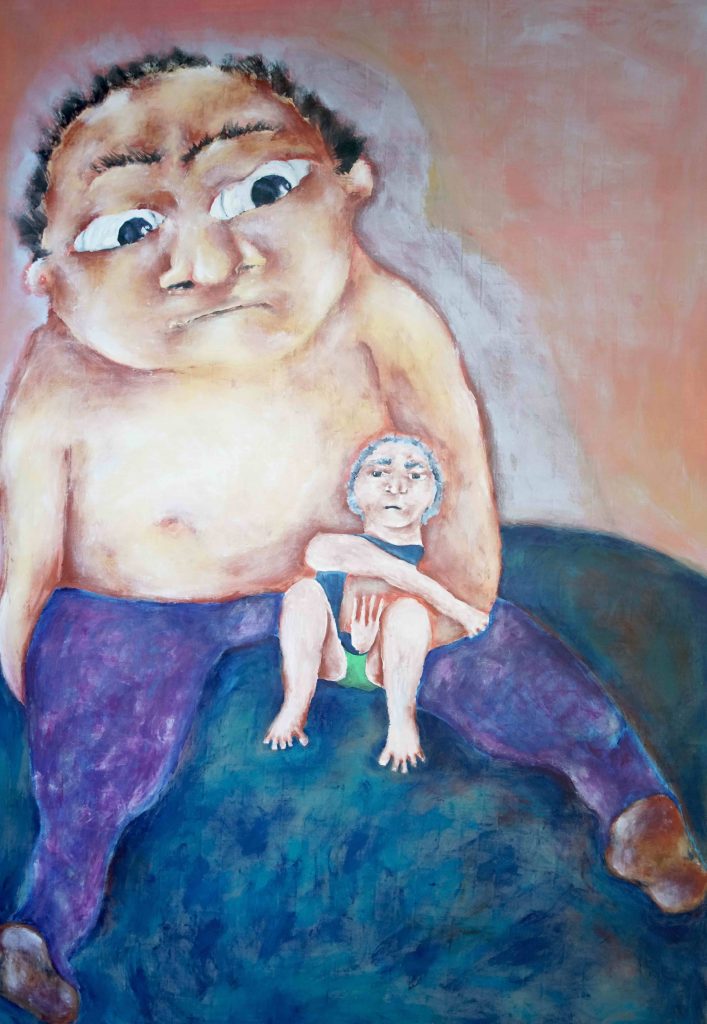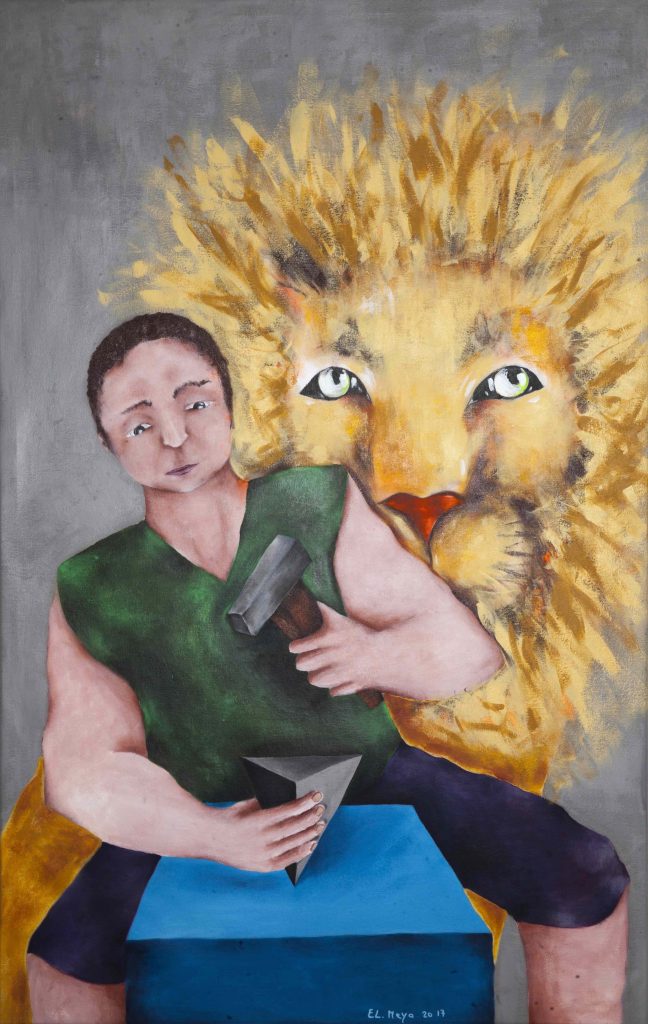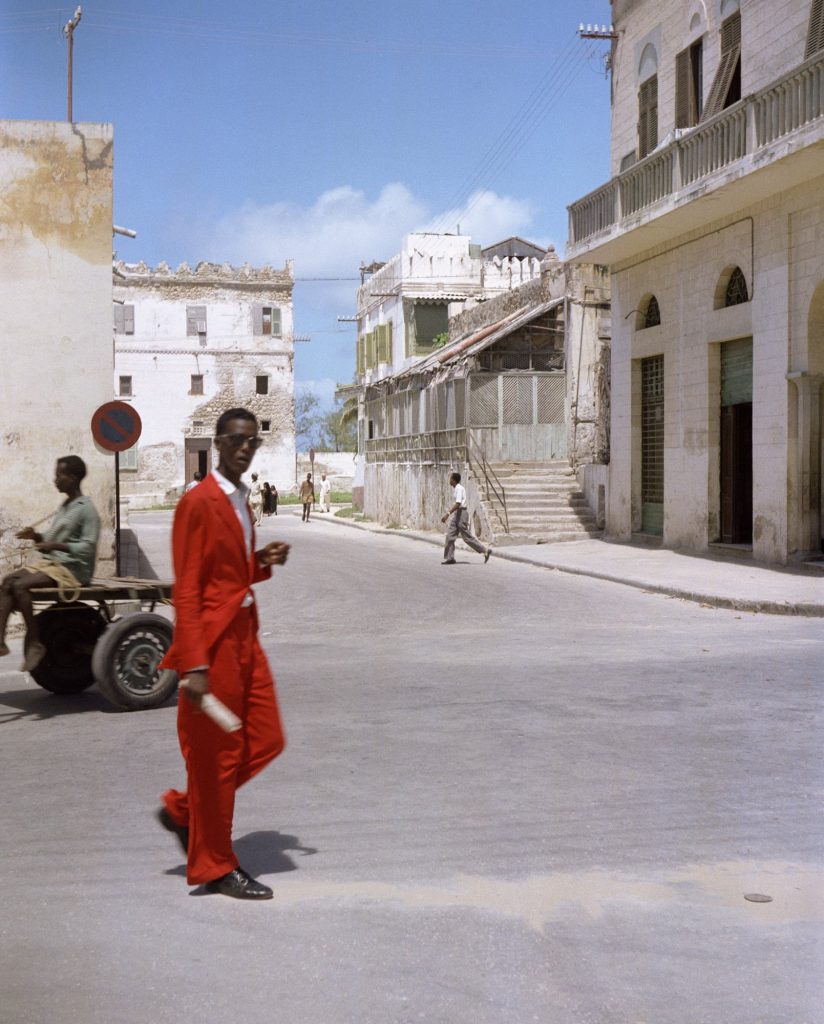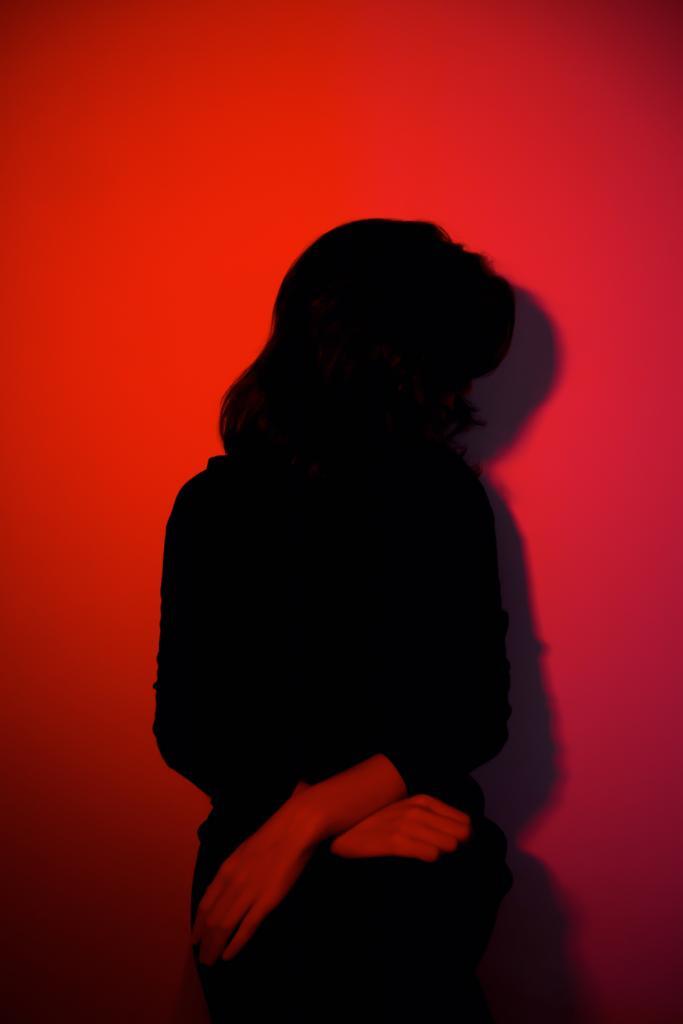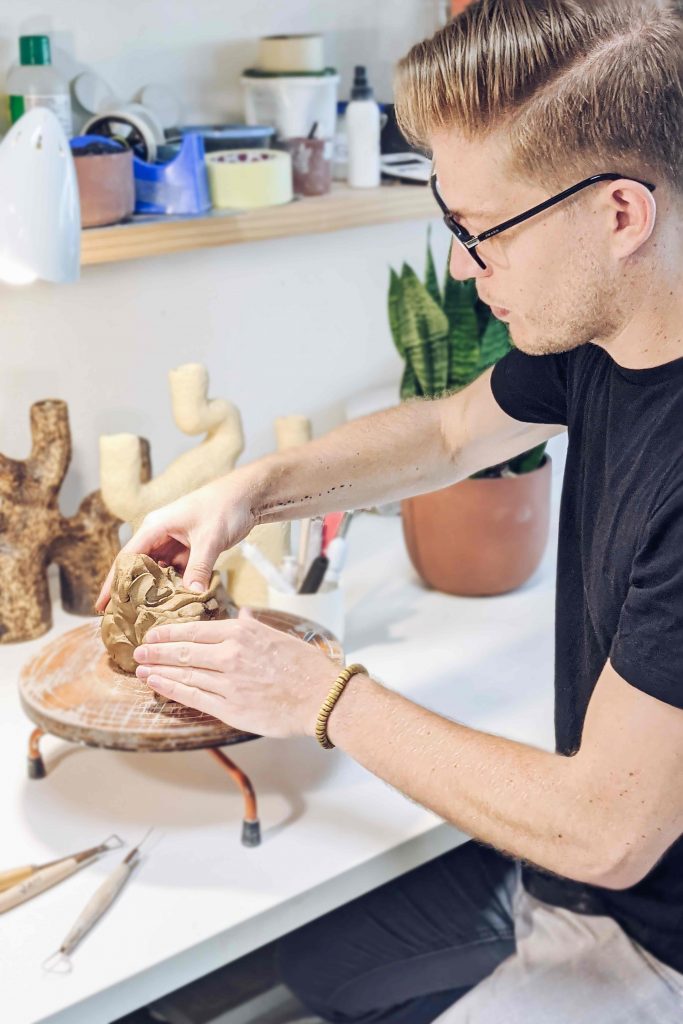The Project Oumlil by visual artist EL Meya is on view at rhizome
20/03/2021 - 10/04/2021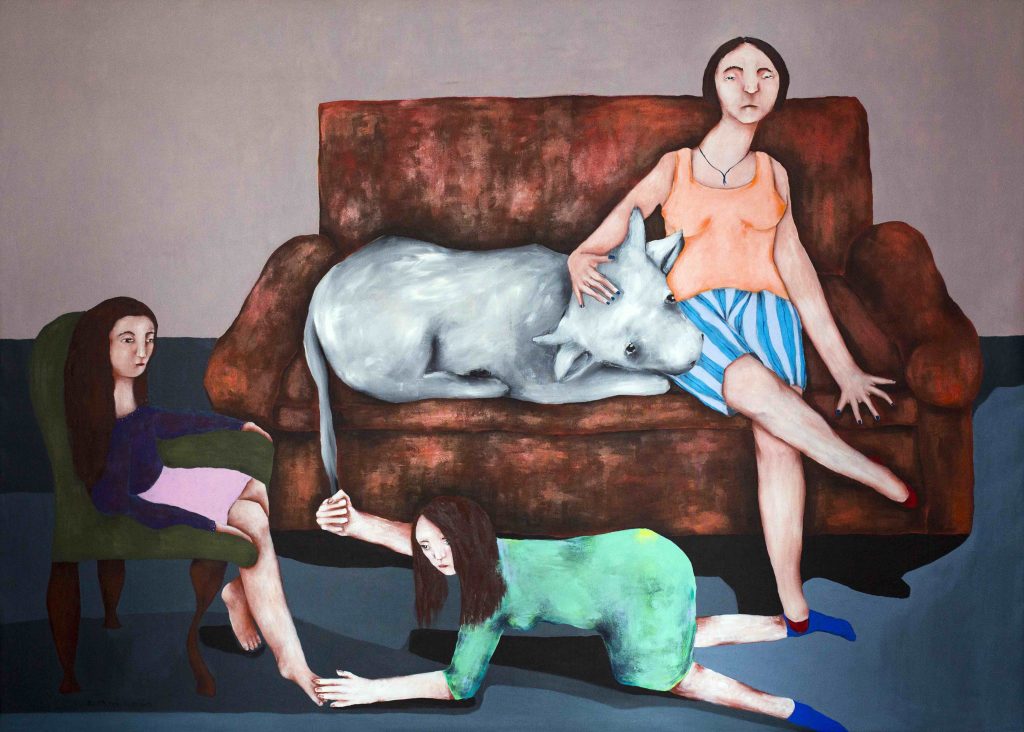
Oumlil is the first monograph of the artist EL Meya comprising a series of works she developed between 2015 and 2017. It is also the title of her solo exhibition which opens on 20 March 2021 at the gallery rhizome in Algiers and will be on view until 10 April.
The book includes over twenty paintings and sketches and has been deliberately designed and produced in a style and format to mimic a ” travelling exhibition”. The handmade, limited edition book also includes essays by five authors, including Anissa Bouayed: “About El Meya and Oumlil: the Ogresse is her! “Guillemette Grobon: “El Meya, painter of the face to face”, Hajar Bali: “El Meya, painting, and the elusive energy”, Karima Lazali: “An eroticism of boredom” and Bernadette Dufrene-Nadia Saou: “Moving forward! A woman in painting”.
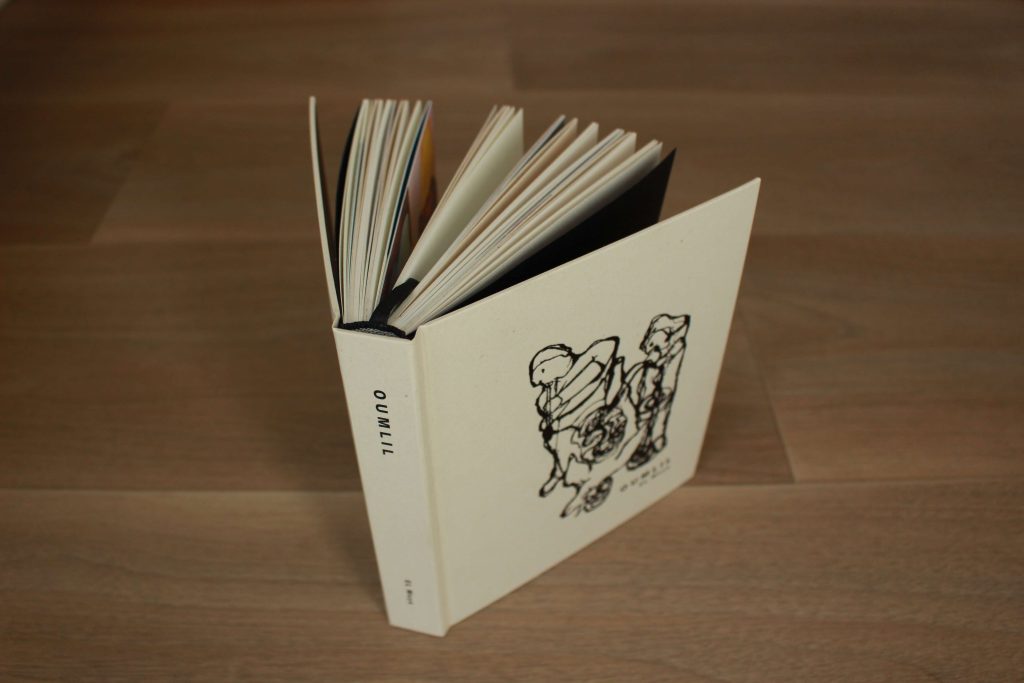
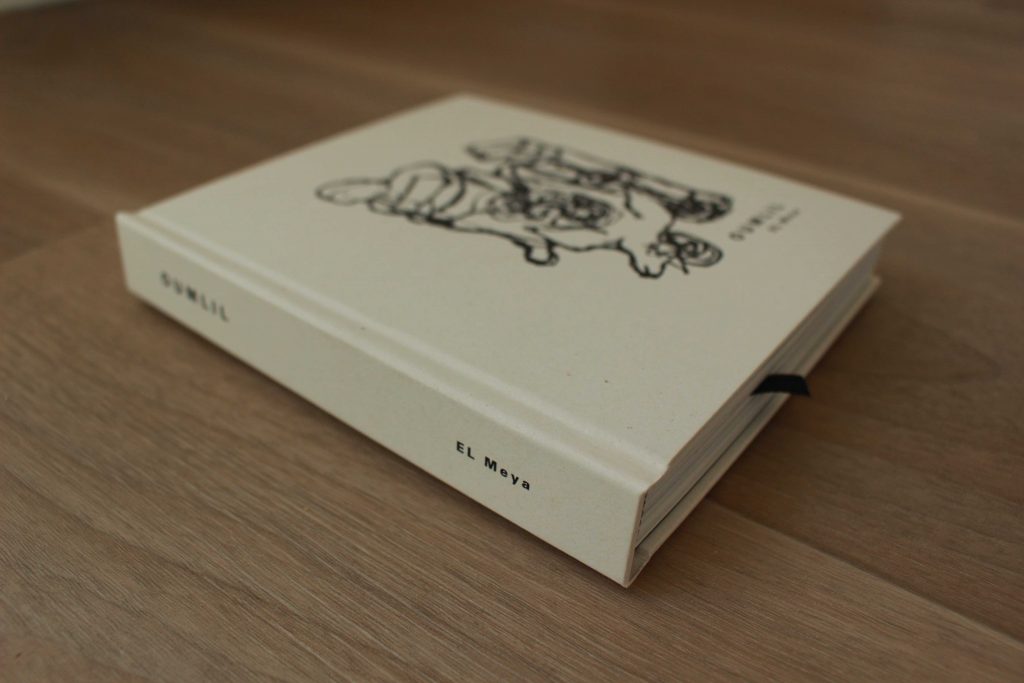
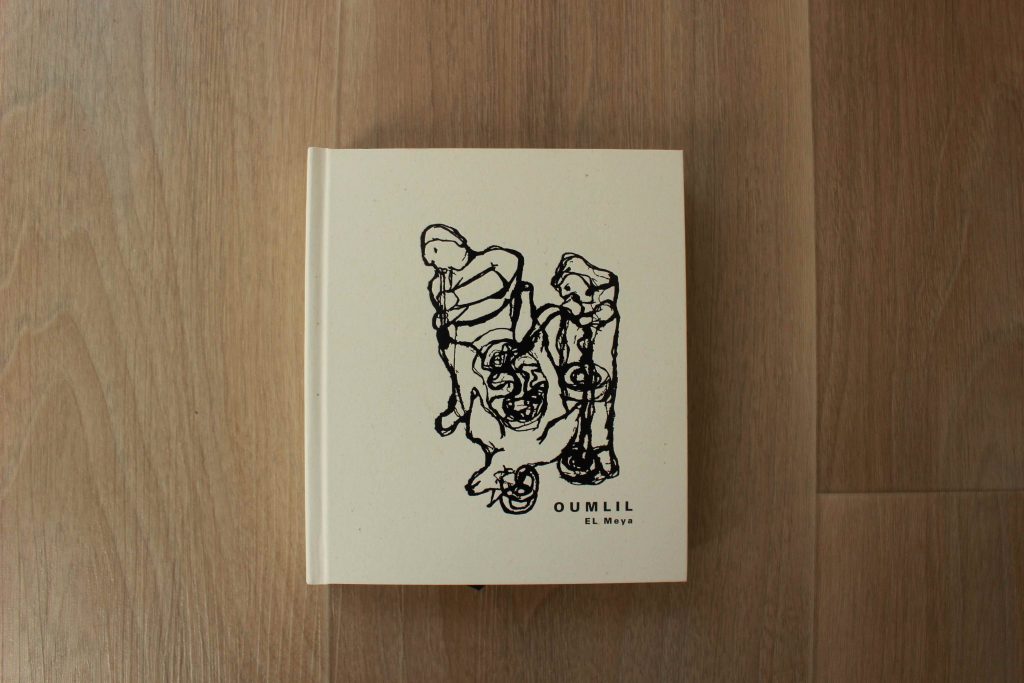
First publication on the work of El-Meya painter. Published by Gallery rhizome.
© Photo Mehdi Hachid.
Born in 1988 in Constantine, Algeria, EL Meya lives and works in Algiers. A graduate of the Ecole des Beaux-Arts d’Alger in 2013, the artist questions the representations of her Algerian, Maghrebian and Mediterranean society, the position of painting with regard to the history of art. El Meya‘s painting, in its naive form, is by no means innocent. It deals with the body, the flesh and wounds.
About EL Meya and Oumlil: the Ogresse is her! Extracts from the text by Anissa Bouayed
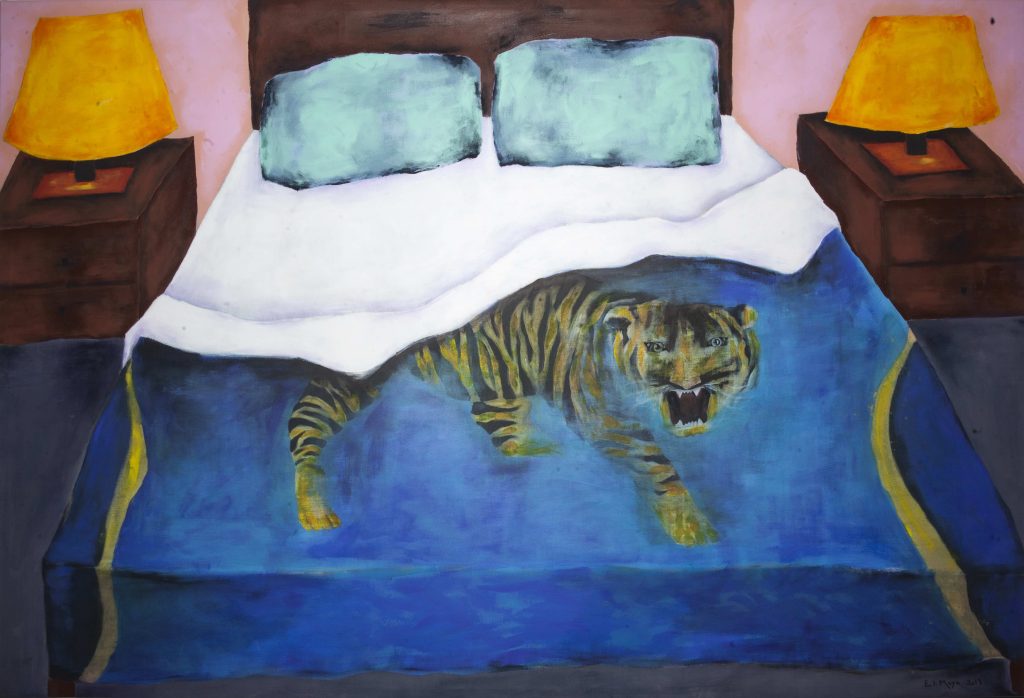
Oumlil, Oum Lil. This project has a name, a name that can be composed as if one were weaving a web, polysemic through its intermingling of Arab references to the mother and the night, and Berber references to the Mediterranean Sea. It is like an invitation to think broadly, to embrace a long history, with reciprocal influences between civilisations.
(…) The Oumlil project is at the junction of an anthropological approach to rites, myths and the sacred and aesthetic reflections on the representation of symbols, on the limits of the representation of sexuality, the body, violence and death, which gives it this enormous transgressive impact. There is something performative in this risk-taking. The challenge is there, in the transgression. “There is no such thing as an innocent eye,” said the art historian Ernst Gombrich.
(…) The first impression is one of visual disruption. Even if the room for manoeuvre is narrow, EL Meya has avoided falling into provocation with its risks of being pointless, counterproductive and repulsive. Her strategy is to astonish, even to disturb; which makes us stop and take the time to understand what painting means, for her and for us. She stretches her canvases between reality and us, to fight against the “obvious”, against appearances, against things that are “self-evident”, that “pop out”… She asks us to walk from canvas to canvas, in front of which we would “freeze-frame”, as if in front of so many screens, in order to disturb us at first, so that we can then ask ourselves questions, once this first feeling of disquieting strangeness has passed.
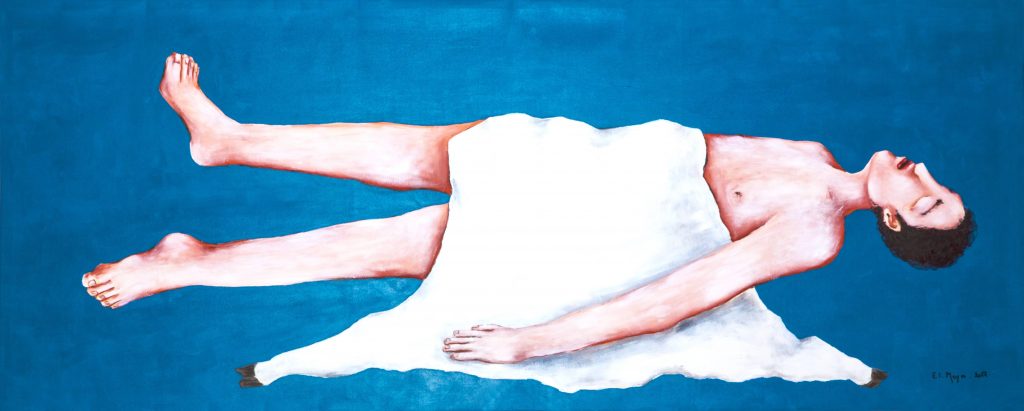
(…) Thus the Oumlil project connects the portraits of women but also of men to the question of power; she captures in the family – that lowest common denominator of the social structure – which she examines at different moments, these truculent and disturbing couples to say the question of the distribution of authority in the marriage, in the house with “gendered” spaces such as the living room or the street… She reveals the impact of the domestic division of labour which applies to these notions of interior and exterior spaces as the preserve of one or the other sex.
(…) These works are challenging because they require us to actively read them, to look for what is underneath as well as what we see on them, or imagine next to them, in that immaterial off-field that is nevertheless necessary and present to our minds.
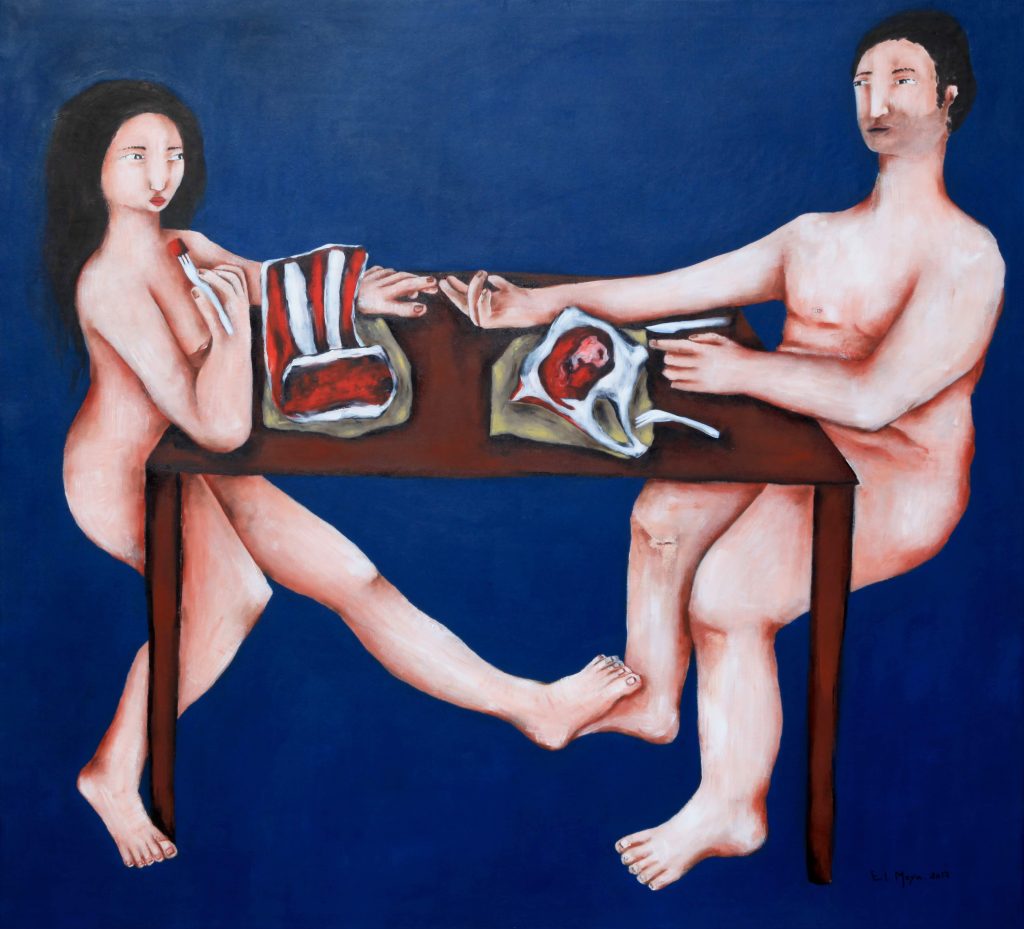
Photo Mehdi Hachid.
(…) Oumlil offers us a revolving reading, allowing us to navigate a real regime of the imaginary, which is much more than an accumulation of one-dimensional and unquestioned archetypes. And this is undoubtedly the lesson that can be drawn from this representation of a world that is strongly impregnated with morality but that is not presented as a definitively closed system. EL Meya also shows that personal identity coexists with established identities, that there can be spaces of non-conformity… and that the power of imagination makes it possible to play with borders, to make them move.
EL Meya‘s work has been presented in numerous exhibitions in Algeria and abroad. The artist completed an artist residency in 2021 at La VillaArson, Nice, France/ and in 2018 La Friche Belle de Mai, Marseille, France and Résidence Méditerranée, L’Institut Français, Algeria. EL Meya is represented by the gallery rhizome, Algiers.

